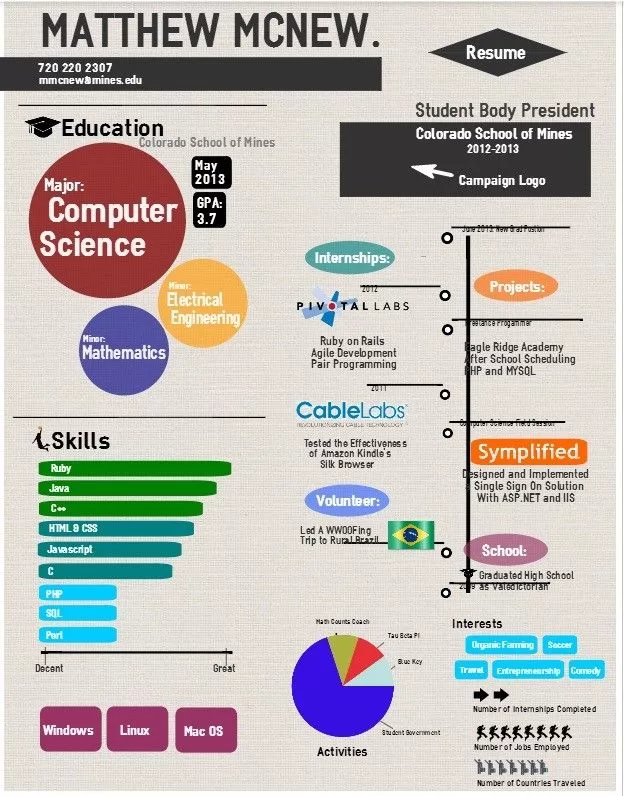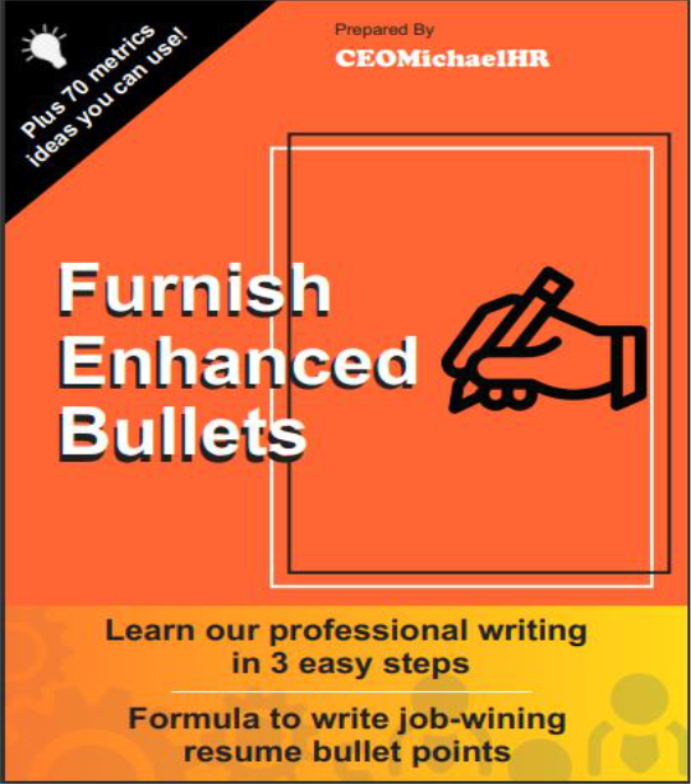
New clients, unlock 10% off all plans 🔥 at checkout with code: CEO10SPECIAL (Limited Time Offer)
New clients, unlock 10% off all plans 🔥 at checkout with code: CEO10SPECIAL (Limited Time Offer)






In reality, there exist certain resume mistakes or errors that ensnare both recent graduates and seasoned veterans, regardless of their extensive work history.
However, with the knowledge to correct these missteps, you’ll be primed to embark on the journey toward securing your ideal career opportunity!
In this article, we shall impart wisdom concerning 21+ prevalent resume mistakes and offer guidance on how to steer clear of them.
So, let’s begin!
When crafting your resume, it’s crucial to showcase only those experiences and skills that directly align with the job you’re pursuing.
Consider this scenario: you’re aiming for a position as an accountant. In this case, your resume should be a laser-focused presentation, aimed at persuading the employer that you’re the ideal candidate for the accounting role.
Consequently, your work history and skills section should revolve around accounting.
Steer clear of mentioning unrelated experiences, such as that stint as a server from five years ago—this won’t bolster your candidacy.
Likewise, refrain from listing skills like Photoshop. While you might possess exceptional Photoshop prowess, it’s simply not pertinent to the role, and including it will consume valuable resume real estate.
Let’s contrast these two assertions:
Enhanced performance.
VS
Achieved a remarkable 20% annual sales growth from 2021 onwards through a comprehensive sales script overhaul.
Which one carries more weight?
Clearly, the second one does.
Why?
Because it’s incredibly specific. It provides concrete evidence of the applicant’s accomplishments, the strategies employed, and the timeline within which they achieved these results.
When detailing your experiences on your resume, it’s advisable to incorporate:
Quantifiable Results: What specific outcomes did you deliver? Express them in numbers.
Methodology: How did you go about attaining these results?
Timeframe: Within what period did you accomplish these feats?
Employing a professional or executive resume writer can transform your resume into a powerful tool for success.
If you’re still crafting your resume on your own, enlisting the expertise of a professional resume writer can make a world of difference, we guarantee it.
Imagine the hours spent fine-tuning your resume, agonizing over the right wording, formatting, and structure…
Only to make a small adjustment, causing your entire resume to lose its effectiveness.
However, with a professional resume writer, you avoid critical resume mistakes. They bring their skills to the table, ensuring your resume shines – all that’s left for you is to provide the necessary details.
“Critical thinking skill“
“Collaboration skill“
“Organizational skill“
What do these three qualities share in common?
It’s straightforward: countless individuals lay claim to possessing them.
Many job-seekers, particularly recent graduates, inundate their resumes with commonplace soft skills like these in an attempt to leave an impression on employers or simply pad their resume slightly.
However, the problem lies in squandering valuable space. Recruiters have encountered these soft skills on resumes countless times, rendering them unimpressive.
Consequently, they tend to overlook them entirely.
Our suggestion is to emphasize tangible hard skills, substantiated by your experience, rather than relying on overused soft skills.
Find out: 9 Soft Skills Employers Are Looking for
Speaking of skills, another critical resume mistake is listing commonplace skills that are assumed in the modern world.
In this day and age, it’s taken for granted that you possess basic computer proficiency, familiarity with Microsoft Office, Excel, and similar software.
When you include such commonplace skills on your resume, you’re squandering valuable real estate that could be better utilized for showcasing your unique strengths.
Our recommendation is to prioritize showcasing technical proficiencies that distinguish you from the competition.
In-demand technical skills for today’s job market include:

You’ve likely come across the allure of infographic resumes, those visually captivating creations that often make a splash across the internet due to their unconventional take on the traditional CV.
However, it’s essential to tread cautiously when considering an infographic resume, as its appeal may not align with its actual effectiveness in your job search.
Unless you possess a professional background in graphic design, most recruiters won’t find themselves enamored by intricate designs and vibrant colors. In fact, quite the opposite might be true.
Infographic resumes, while visually striking, often prove more perplexing to digest, potentially leading hiring managers to skim past them.
Some may even view them as unprofessional, once again leading to a missed opportunity.
To compound matters, applicant tracking systems struggle to interpret infographic resumes, which means they may face automatic rejection before they even reach a human recruiter.
Find out: The 30 Funniest Resumes and Job Applications We’ve Ever Seen
Spearheaded marketing activities for Project X, propelling sales to exceed $200,000 for the quarter.
VS
Tasked with overseeing Project X marketing.
Do you discern the contrast between these two scenarios?
The former illustrates an accomplishment, showcasing your prowess in your role.
The latter, conversely, merely conveys a responsibility, outlining your job description.
Recruiters invariably gravitate towards the former. They already comprehend your responsibilities; chances are, other applicants had identical roles.
Suppose you’re seeking a sales position and you state: “Responsible for selling products to clients.”
Well, guess what? Every other candidate had the same duty.
Now, envision articulating something like this:
“Surpassed 2020 sales KPIs by an impressive 50%.”
Now, that’s attention-grabbing! It signifies you’re not just a run-of-the-mill salesperson but a top-tier achiever.
In essence, the message here is clear: Whenever feasible, emphasize your achievements on your resume, not just your responsibilities.
One of the critical resume mistakes job-seekers stumble into is using a one-size-fits-all resume for multiple job applications.
This widespread practice is, unfortunately, a recipe for resume mediocrity.
The reality is, each job posting you encounter is unique, with its own set of demands and requirements.
Consequently, your resume should reflect the specific needs of the position you’re pursuing.
Let’s illustrate this with a practical example. Suppose you’re a Sales Specialist boasting proficiency in two areas:
Now, for the sake of clarity, envision you’re interested in two distinct job opportunities:
‘Email Sales Specialist‘ and ‘Sales Team Lead.‘
If your aim is to land the ‘Email Sales Specialist’ role, your resume should prominently showcase your prowess in email outreach. That’s what the hiring manager is eager to see.
Conversely, if you’re vying for the ‘Sales Team Lead’ position, your resume should primarily spotlight your managerial expertise. The hiring team won’t be particularly interested in your email outreach experiences as long as you convincingly demonstrate your ability to lead a team.
A generic resume fails to provide the necessary depth when it comes to showcasing your crucial skills.
To sum it up, the crux of the matter is that your resume should be a tailored fit for the job you’re pursuing.
In the niche of resume writing, there are three distinct formats to consider:
Reverse-Chronological – This is the classic choice, spotlighting your work history in chronological order, with the most recent experiences taking the lead.
Functional – Tailored more towards showcasing your skill set rather than an extensive work history. It’s particularly useful for recent graduates or career changers who may not have a lengthy work track record.
Combination – A harmonious blend of the above two formats, striking a balance between work experience and skills.
While opting for a functional or combination resume is perfectly acceptable, the reverse-chronological format stands as the most prevalent and trusted choice.
In most instances, it’s also the wisest selection.
Ultimately, recruiters across the globe are well-acquainted with this format, making it instantly recognizable.
If you venture into an alternative format, such as functional, some hiring managers may wonder if you’re trying to hide something, as it appears you’re not emphasizing your work experience.
Find out: Bad Resume Examples: The 6 Mistakes You Definitely Should Avoid
One crucial aspect of crafting a standout resume is choosing the right file format. It might seem like a minor detail, but it can make a significant difference.
Never save your resume as a JPEG or PNG image file.
Instead, opt for either a PDF or Docx format, as these are compatible with most applicant tracking software systems.
While both options work, we generally recommend using a PDF. It ensures your resume layout stays intact, unlike Docx, which can sometimes cause formatting issues.
However, keep in mind that some recruiters may request a Docx file, particularly if they’re using less-than-ideal applicant tracking software. If a job posting explicitly asks for a Word file, be sure to comply.
Not all resume formats yield the same impact.
Some formats are captivating, effortlessly scannable, and stand out even amidst a sea of a hundred other CVs.
On the flip side, there are formats that fall short in these regards.
So, opt for a format that:
Is Visually Striking. In many cases, a dash of color can be more effective than the traditional black-and-white approach. Yet, ensure your format remains tasteful, avoiding excessive design flamboyance.
Features Legible Fonts & Font Sizes. We recommend fonts like Gill Sans MT, Roboto or Ubuntu.
Adopts a Two-Column Layout. This facilitates the inclusion of more information without compromising readability.
Navigating whether to include a photograph in your resume can be somewhat intricate. The protocol for this varies depending on your geographical location:
United States
It is generally advised against including a photo in your resume to prevent potential discrimination related to race or appearance.
Of course, this may not hold true if your appearance is directly relevant to the job you’re seeking, such as in modeling roles.
Europe
In many European countries, it’s customary to feature a professional photograph in your resume, although it remains optional.
United Kingdom & Ireland
Similar to the United States, due to anti-discrimination and labor regulations, it’s advisable not to include a photograph in your resume.
Australia
Including a photo in your resume is typically discouraged, unless the job advertisement explicitly requests one.
When designating your submitted resume, consider a format such as:
[Your First Name]-[Your Last Name]-[Resume]
Correct: Michael-Samuel-Resume.pdf
Wrong: UpdatedResumeVersion3.pdf
This not only conveys professionalism but also streamlines the recruiter’s task of singling out your document amidst a sea of others.
Imagine you put “attention to detail’ as one of your top skills on your resume…
But your resume is riddled with grammar and spelling errors.
That’s probably one of the easiest ways to shoot yourself in the foot!
Before submitting your resume, make sure to:
Run it through Grammarly to find any spelling mistakes.
Check for sentences that don’t sound right or things that could be expressed better. Give it a slow and careful read – you can even read it out loud if that helps. While Grammarly can help catch obvious errors, it’s still not 100% accurate.
If you want to make sure you’re error-free, you can even ask a friend or a family member to go through it and catch any mistakes that might have slipped by.
When faced with employment gaps, it’s tempting to omit them, hoping the recruiter won’t notice. But rest assured, they’ll spot them.
Employment gaps often raise red flags for recruiters. While some gaps are perfectly valid, like maternity or medical leave, others might indicate frequent job changes or terminations.
If you leave a gap unaddressed on your resume, the recruiter may assume the worst.
To handle an employment gap, consider placing something like this between your work experiences (or at the top, if it’s recent):
Employment Gap Example
09/2019 – 06/2020
I took a break from my career due to an automobile accident that left me injured. After undergoing surgery, I’ve fully recovered and am eager to rejoin the workforce.
When embarking on a career change, it’s vital to transparently communicate this transition in your resume to avoid any misinterpretation by recruiters.
Failing to do so might lead them to assume you’re randomly applying for positions, potentially resulting in rejection.
For instance, if your previous experience lies in accounting, and you’re now pursuing a role in graphic design, it’s crucial to acknowledge this shift.
To convey your career change effectively in your resume, consider the following steps:
Begin with a clear resume objective, such as: “Experienced accountant seeking an entry-level position in graphic design.”
Incorporate a skill summary that showcases your relevant skills, even if you lack direct experience.
A skill summary might resemble the following:
Skill Summary Example
Graphic Design
Don’t forget to touch upon your career transition in your cover letter. Providing context allows recruiters to better understand your situation and evaluate your application appropriately.
Find out: College to Career Transitioning: 8 Critical Factors to Consider for Success
Remember, your resume is a snapshot, not an autobiography. It should be a concise showcase of your key skills and experiences.
In most cases, a one-page resume should suffice for presenting your qualifications effectively.
If you’re a seasoned professional with an extensive background, you may extend it to two pages, but be cautious not to exceed this limit.
However, if you’re pursuing a career in academia, a curriculum vitae (CV) can span three pages or even more.
For further insights, refer to our article on determining how far back should a resume go?
Conversely, your resume should not be overly concise either.
This is often the case for college students or recent graduates who lack substantial work experience, resulting in a resume that barely fills half a page.
The key is this: even for student resumes, aim for a 1-page length. In the absence of work experience, use that space to showcase other relevant experiences, such as:
Extracurricular Activities.
Here’s an illustration of how to incorporate these elements into your resume:
Extracurricular Activities
Club Founder & President
Public Speaking Club
10/2017 – 03/2019
Picture yourself diligently crafting an impeccable resume, pouring in hours of effort and dedication.
Now, picture the frustration of receiving no response simply because a single typo lurked in your contact details.
It’s a scenario none of us would wish for.
To safeguard against this avoidable setback, make it a practice to meticulously review your email address and phone number before dispatching your resume.
A second or even third review can be a lifesaver.
For those who might miss the finer points, enlisting the help of a trusted friend or family member to perform a final check is a wise precaution.
It’s imperative to maintain complete honesty on your resume.
Even if you’re fortunate enough to secure the job, you’ll find yourself in a challenging predicament if you can’t deliver what you’ve claimed.
Inevitably, this may lead to termination or you resigning, resulting in a loss of both your time and the company’s.
Find out: Lying on Your Resume: Can You? 99% Do
As we previously mentioned, many large organizations today utilize applicant tracking systems (ATS) to streamline the initial screening of resumes.
Here’s how ATS software functions: it scans your resume, seeking specific keywords relevant to a job posting. If these keywords are absent, your resume may be automatically rejected.
For example, if you’re applying for a software developer position, the ATS might be on the lookout for keywords like:
If your resume lacks these critical keywords, it could face automatic rejection by the ATS.
To increase your chances of success, follow these top tips for creating an ATS-friendly resume:
Begin by selecting a resume template that’s compatible with ATS systems. Not all templates are ATS-friendly, so choosing the right one is essential to avoid early setbacks.
Carefully review the job description and identify the most important keywords for the position.
Integrate these keywords strategically throughout your resume, typically in your resume summary, work experience, or skills sections.
Finally, refrain from including graphics or images on your resume. Elements such as charts, tables, or visuals are often not compatible with applicant tracking systems.
In conclusion, we’ve covered some of the most critical mistakes found in resumes.
Thank you for taking the time to read our insights! We hope these tips have equipped you to elevate your resume to the next level.
Remember, perfecting your resume is just the initial stride in your job search journey. To maximize your chances of success, you’ll also need to target the right job opportunities, craft compelling cover letters, and excel in interviews.
If you’re eager to delve deeper into these essential skills, we invite you to explore our invaluable resources:
CEOMichaelHR Resume eBook – Our exclusive, free resume e-book offers a comprehensive roadmap to refining your resume and securing your dream job. It covers vital aspects of the resume-tailoring process.
Common Job Interview Questions – Most interviews revolve around a set of standard questions. Learn what these behavioral interview questions are, how to prepare effectively, and how to deliver winning responses.
How to Write a Cover Letter – Crafting an effective cover letter need not be a daunting task. Our comprehensive guide will show you the ropes, ensuring you compose your ideal cover letter with confidence and precision.
Share
Further Reading
*The names and logos of the companies referred to in this page are all trademarks of their respective holders. Unless specifically stated otherwise, such references are not intended to imply any affiliation or association with CEOMichaelHR.
Land interviews 3x faster while submitting fewer resumes
Copyright © 2025, ceomichaelhr.com.
All rights reserved.
Land interviews 3x faster while submitting fewer resumes
Copyright © 2025, ceomichaelhr.com.
All rights reserved.

Learn the same techniques our expert resume writers have used to get thousands of clients closer to their next job
Unlock expert resume tips, start landing multiple interviews!

Stay connected to receive powerful career insights, updates, and inspiration that’ll help you hit your career goals.